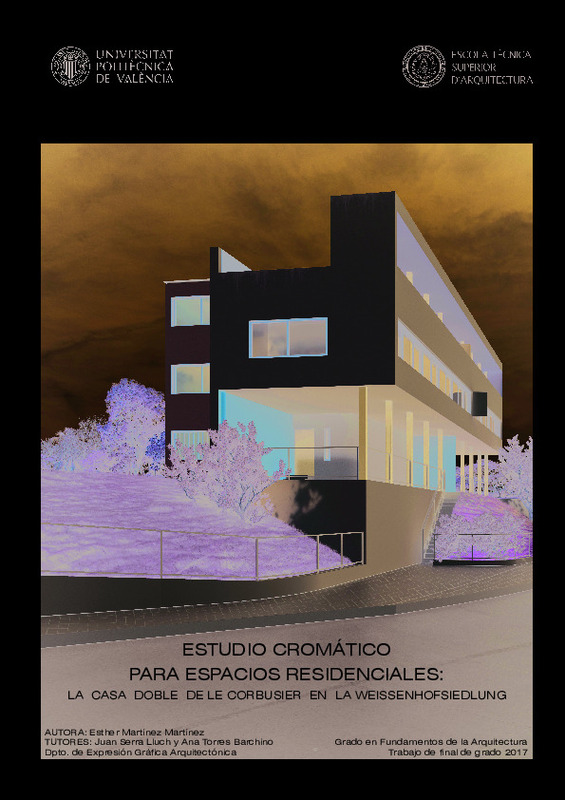JavaScript is disabled for your browser. Some features of this site may not work without it.
Buscar en RiuNet
Listar
Mi cuenta
Estadísticas
Ayuda RiuNet
Admin. UPV
Estudio cromático para espacios residenciales: la casa doble de Le Corbusier en la Weissenhofsiedlung
Mostrar el registro completo del ítem
Martínez Martínez, E. (2017). Estudio cromático para espacios residenciales: la casa doble de Le Corbusier en la Weissenhofsiedlung. http://hdl.handle.net/10251/102784
Por favor, use este identificador para citar o enlazar este ítem: http://hdl.handle.net/10251/102784
Ficheros en el ítem
Metadatos del ítem
| Título: | Estudio cromático para espacios residenciales: la casa doble de Le Corbusier en la Weissenhofsiedlung | |||
| Autor: | Martínez Martínez, Esther | |||
| Director(es): | ||||
| Fecha acto/lectura: |
|
|||
| Resumen: |
[ES] Esta investigación acerca del color en las viviendas 14 y 15 de Le Corbusier para la Weissenhofsiedlung tiene como objetivo la representación exacta, mediante un modelo tridimensional, de los colores dispuestos en ...[+]
[EN] This investigation sets out to study the intentionality of colour in Le Corbusier's Houses 14 and 15 for the Weissenhofsiedlung. Its main objective is, on the one hand, to accurately reproduce the arrangement of colours ...[+]
|
|||
| Palabras clave: |
|
|||
| Derechos de uso: | Reconocimiento - No comercial - Sin obra derivada (by-nc-nd) | |||
| Editorial: |
|
|||
| Titulación: |
|
|||
| Tipo: |
|
Localización
recommendations
Este ítem aparece en la(s) siguiente(s) colección(ones)
-
ETSA - Trabajos académicos [4687]
Escuela Técnica Superior de Arquitectura








